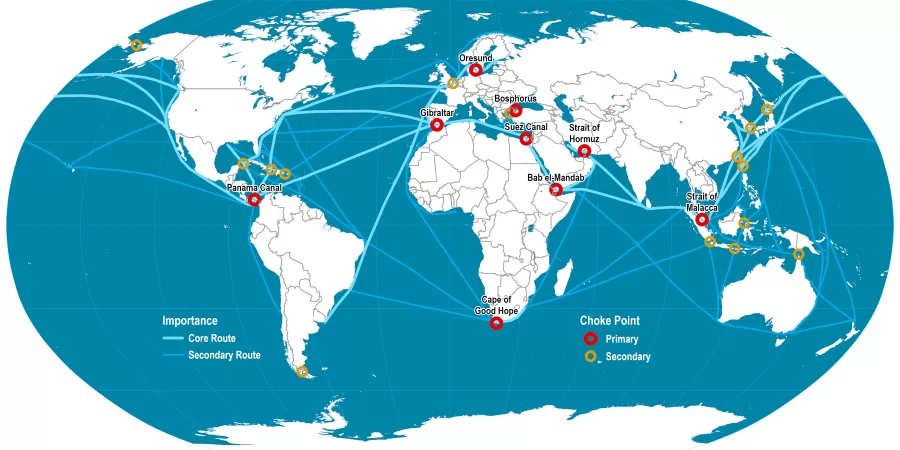For Amazon FBA sellers, choosing the right shipping route from China is a critical operational decision. It directly impacts your bottom line, inventory turnover, and ability to meet customer demand. This guide breaks down the primary sea freight and air transport routes, providing clear data on transit times, costs, and best practices for your international freight strategy.
Highlights: Key Insights for FBA Shipping
West Coast Dominance: Over 70% of shipping from China to the United States arrives via the major ports of Los Angeles/Long Beach (LA/LB) and Seattle/Tacoma, offering the fastest ocean transit times.
Air Freight Hubs: Key air gateways include Los Angeles (LAX), San Francisco (SFO), New York (JFK), and Chicago (ORD), crucial for expedited cargo tracking and replenishment.
Transit Time Reality: Typical ocean freight transit from Shenzhen to LA takes 14-18 days; air freight can be 3-8 days, door-to-door.
Cost Variables: Beyond base freight charges, budget for Amazon-specific fees: palletizing, FBA labeling, and delivery appointment scheduling.
FBA Compliance is Key:Strict Amazon requirements for labeling (FNSKU) and packaging are as important as customs clearance for avoiding receiving delays.
Peak Season Congestion: Q4 (Oct-Dec) brings severe port congestion and rate spikes on all routes. Book your sea or air transport at least 4-6 weeks in advance.
Insurance Recommended: Freight insurance (0.2%-0.5% of cargo value) is a best practice to protect against loss or damage during the long Pacific crossing.
Table of Contents
Major Ocean Freight Routes to the US West Coast
Air Freight Routes & Key US Gateway Airports
Cost & Transit Time Comparison: Sea vs. Air
Beyond Shipping: FBA Requirements & Customs
Best Practices for Choosing Your Route
Frequently Asked Questions (FAQ)
Major Ocean Freight Routes to the US West Coast
The vast majority of China-to-US FBA shipping moves via ocean freight. The most efficient routes connect major Chinese ports to the largest US container hubs.
Primary China Origin Ports:
Shanghai: The world's busiest container port, excellent connectivity.
Shenzhen/Yantian: A mega-port complex close to manufacturing in Guangdong.
Ningbo-Zhoushan: Another top global port with extensive carrier services.
Qingdao: A key port for Northern China manufacturing.
Primary US Destination Ports (West Coast):
Los Angeles/Long Beach (LA/LB): The largest US port complex. Directly serves Amazon fulfillment centers in Southern California (e.g., ONT8, LGB8).
Seattle/Tacoma (Pacific Northwest): Faster transit times from North China. Serves warehouses in the Pacific Northwest and Midwest via rail.
Oakland (San Francisco Bay Area): Serves Northern California fulfillment centers.
Transit Time (Port to Port):
Shanghai to LA/LB: 13-16 days
Shenzhen to LA/LB: 14-18 days
Qingdao to Seattle: 12-15 days
Air Freight Routes & Key US Gateway Airports
When speed is critical, air freight is the solution. Key routes connect major Chinese cargo airports to US entry points for customs clearance.
Primary China Origin Airports:
PVG (Shanghai Pudong International Airport)
CAN (Guangzhou Baiyun International Airport)
SZX (Shenzhen Bao'an International Airport)
HKG (Hong Kong International Airport)
Primary US Destination Airports:
LAX (Los Angeles): The top gateway for Asian air cargo, with extensive trucking to local fulfillment centers.
SFO (San Francisco): Serves Northern California.
JFK (New York): The main East Coast hub for air cargo.
ORD (Chicago): A major hub for distributing goods to the Midwest and East Coast.
Transit Time (Airport to Airport): 2-5 days, with total door-to-door time typically 5-10 days.
Cost & Transit Time Comparison: Sea vs. Air
Your choice depends entirely on your balance between cost and speed. Here’s a snapshot based on current market data (Freightos 2025, IATA 2024).
|
Shipping Method
|
Estimated Transit Time (Door-to-Door)
|
Estimated Cost (China to US West Coast)
|
Best For
|
|
Express Air Freight
|
3-5 days
|
$$$ (e.g., 7-10/kg)
|
Critical inventory replenishment, high-value goods
|
|
Standard Air Freight
|
5-8 days
|
$$(e.g., 5-7/kg)
|
Faster than ocean, cheaper than express
|
|
Full Container Load (FCL)
|
22-30 days
|
$(e.g., 3,800-$5,500/40HC)
|
Large, non-urgent shipments, lowest cost-per-unit
|
|
Less than Container (LCL)
|
28-35 days
|
$$(e.g., 180-$250/CBM)
|
Medium-sized shipments, not time-sensitive
|
Note: Costs are volatile and depend on fuel prices, demand, and seasonality. Always get a current quote.
Beyond Shipping: FBA Requirements & Customs
Getting your shipment to the US is only half the battle. Customs clearance and Amazon's requirements are critical.
U.S. Customs Requirements:
A complete commercial invoice with accurate HS codes and value.
A packing list.
Bill of Lading (BOL) or Air Waybill (AWB).
Importer of Record information (can be you or a customs broker).
Amazon FBA Requirements:
Labeling: Every unit must have a scannable FNSKU barcode (not the manufacturer's UPC).
Packaging: Boxes must be strong, within weight/size limits, and properly sealed.
Shipment Planning: You must create a shipment in Seller Central and adhere to the specified quantities.
Delivery Appointment: Your carrier must schedule an appointment to unload at the fulfillment center.
Best Practices for Choosing Your Route
Plan Around Peak Seasons: Avoid shipping during Chinese New Year (Jan/Feb) and the Q4 holiday rush (Oct-Dec) if possible.
Get Multiple Quotes: Compare rates from different freight forwarders for both sea and air options.
Factor in Total Landed Cost: Include all costs: freight, duties, taxes, freight insurance, Amazon handling, and customs brokerage fees.
Consider Hybrid Options: For large shipments, sending most via sea and a small quantity via air can balance cost and risk of stockouts.
Verify Carrier Experience: Ensure your freight forwarder has experience with FBA shipping and can handle delivery appointments.
Frequently Asked Questions (FAQ)
Q1: What is the most reliable shipping route from China to the US?
A: The Shanghai/Shenzhen to Los Angeles/Long Beach ocean route is the most frequent and well-serviced, but all major routes are reliable outside of peak season weather or congestion events.
Q2: How much does it cost to ship a container from China to the USA?
A: As of early 2024, shipping a 40 ft High Cube (40HC) container from China to the US West Coast can range from $3,800 to $5,500+, depending on the exact origin, destination, and current market demand.
Q3: What is the fastest air freight route from China to the East Coast?
A: Direct flights from PVG (Shanghai) or HKG (Hong Kong) to JFK (New York) offer the fastest transit times to the East Coast, typically 2-3 days airport-to-airport.
Q4: Who handles customs clearance for my FBA shipment?
A: You, as the importer of record, are responsible. Most sellers hire a licensed customs broker (often arranged by their freight forwarder) to handle the filing and process on their behalf.
Q5: Is freight insurance necessary for FBA shipments?
A: While not legally required, it is highly recommended. Ocean and air freight carriers have limited liability. Insurance protects your total investment against loss or damage during transit.
Q6: How do I track my FBA shipment from China?
A: Your freight forwarder will provide a tracking number. For sea freight, use the Bill of Lading number. For air freight, use the Air Waybill number. You can track it on the carrier's website for cargo tracking updates.
Q7: What is the difference between FCL and LCL shipping?
A: FCL (Full Container Load) means you pay for the entire container. LCL (Less than Container Load) means your goods share container space with other shippers, and you pay for the volume you use (per CBM).
Q8: What documents does Amazon require upon delivery?
A: The carrier must have the Bill of Lading (or equivalent) and the unique Amazon-provided shipment ID. The driver will need to check in for a pre-scheduled appointment.
Q9: Can I ship to multiple FBA centers in one shipment?
A: Yes, but it must be planned as such in Seller Central. Your shipment will be split into multiple sub-shipments, each with its own destination and required labels. This can complicate logistics.
Q10: How far in advance should I book my FBA shipment?
A: For sea freight, book 4-6 weeks before your cargo is ready. For air freight, 1-2 weeks is usually sufficient. Always book much earlier during peak seasons (Q4).
Q11: What are the most common reasons for FBA shipping delays?
A: The most common reasons are port congestion, customs inspections (if paperwork is incorrect), missing Amazon labels, and missing delivery appointments at the fulfillment center.
Q12: Are there any restrictions on what I can ship to FBA?
A: Yes. Amazon has a long list of restricted products (e.g., hazardous materials, certain liquids). You must also comply with all U.S. import regulations for your product category.

 EN
EN
 FR
FR
 ES
ES
 JA
JA
 PT
PT
 RU
RU
 AR
AR





